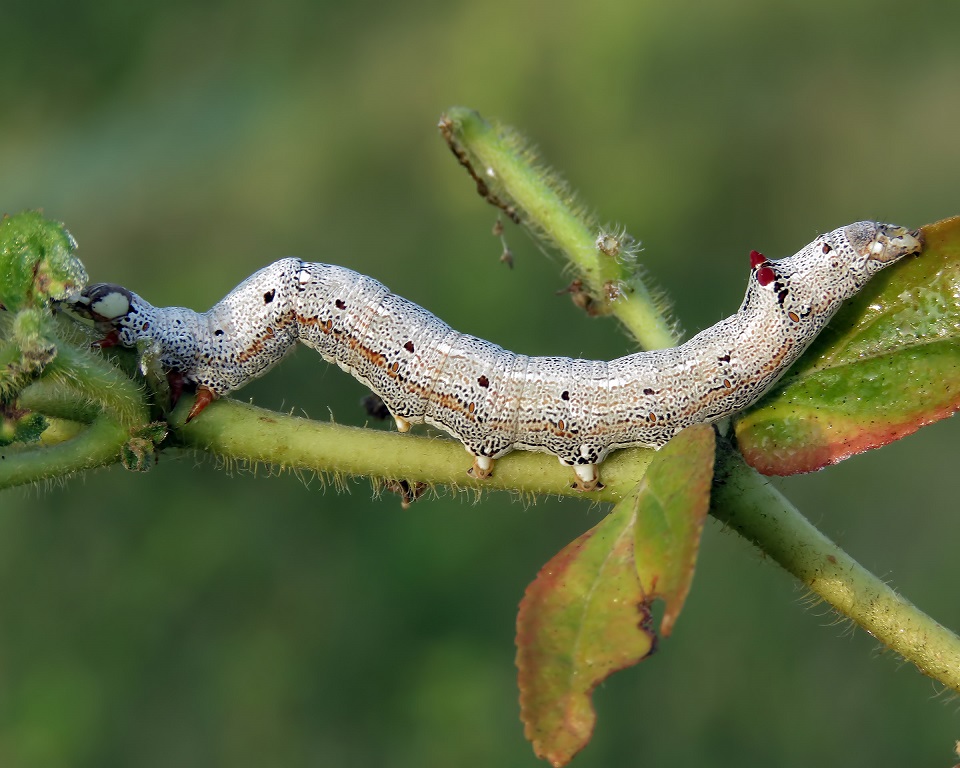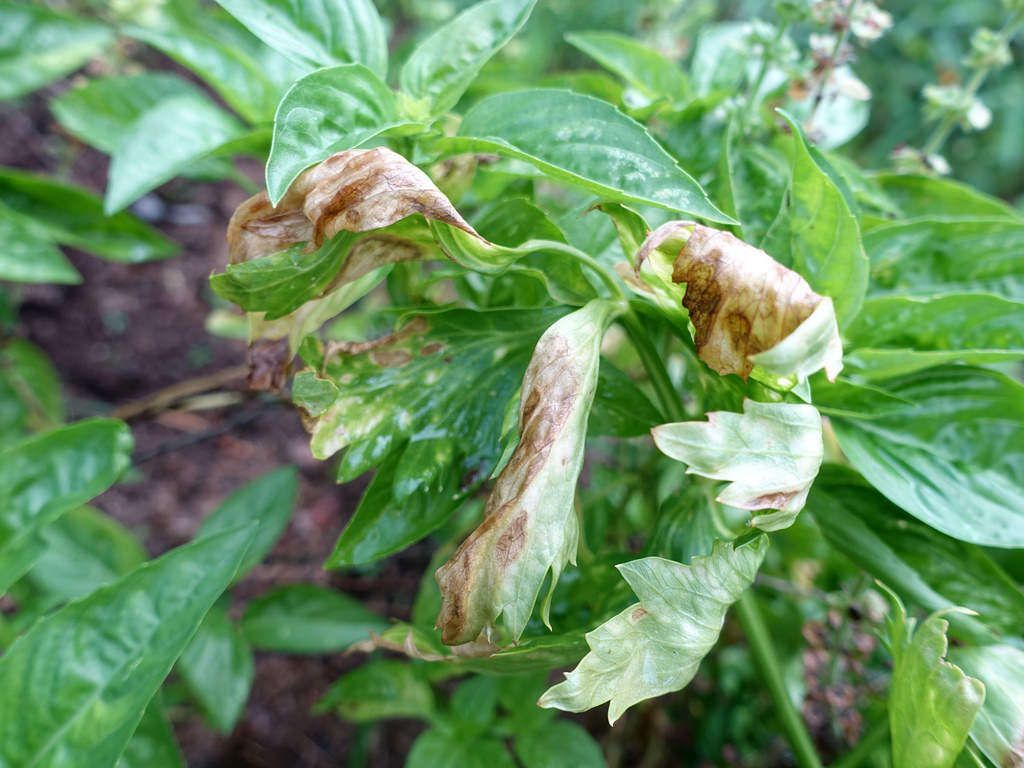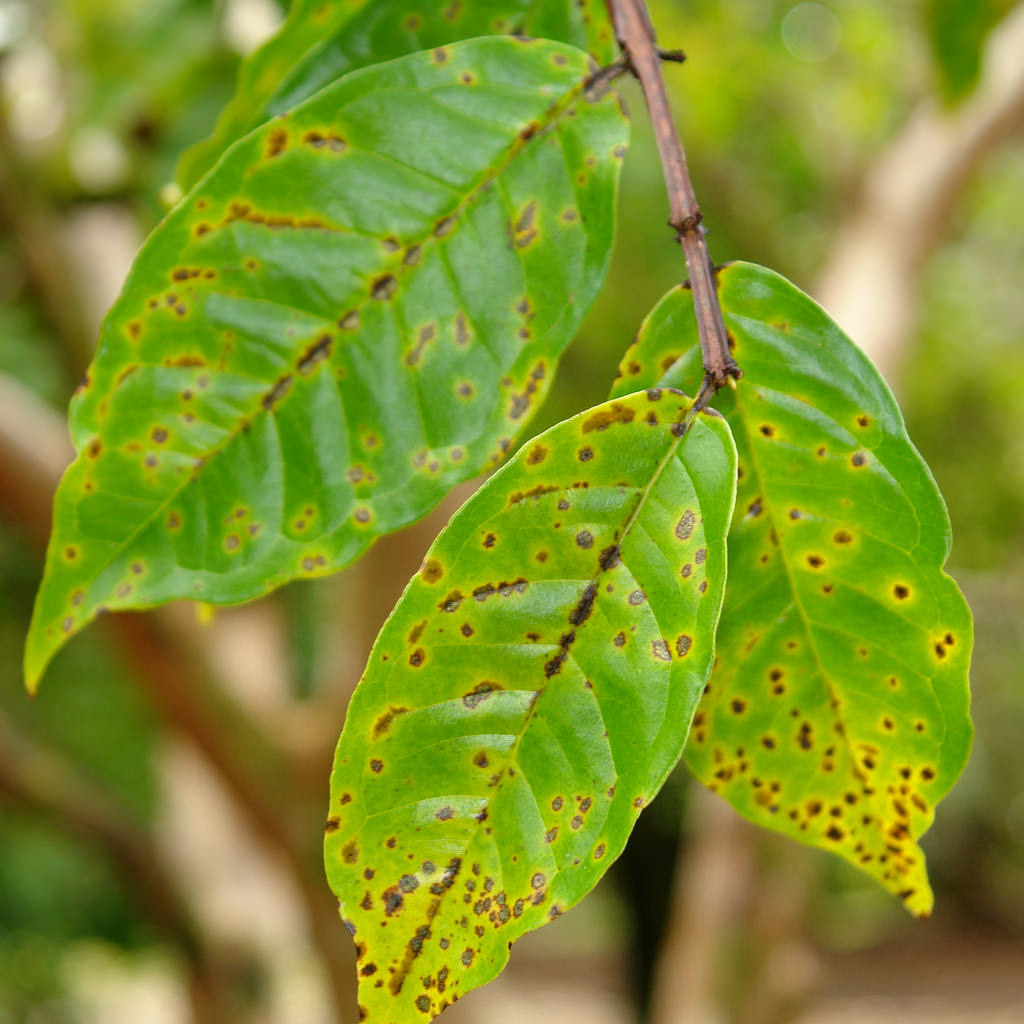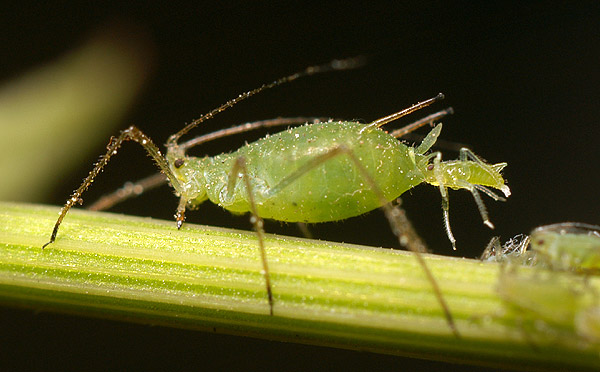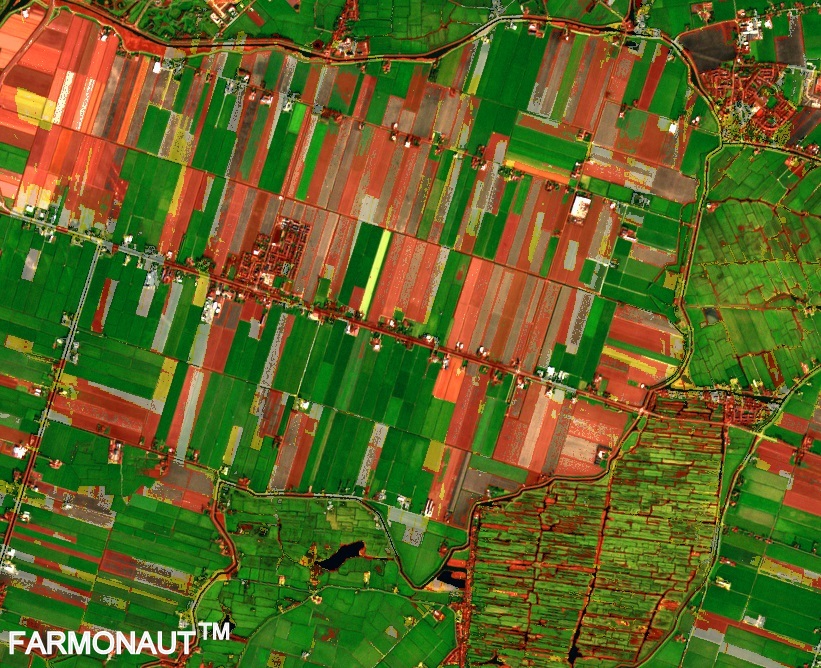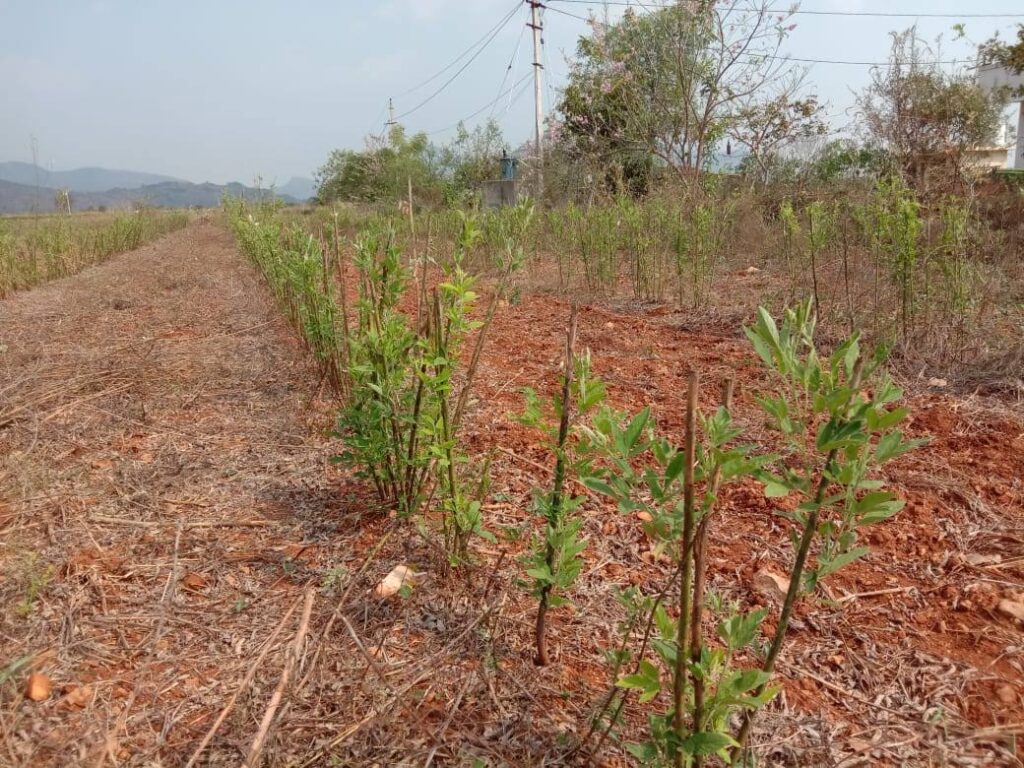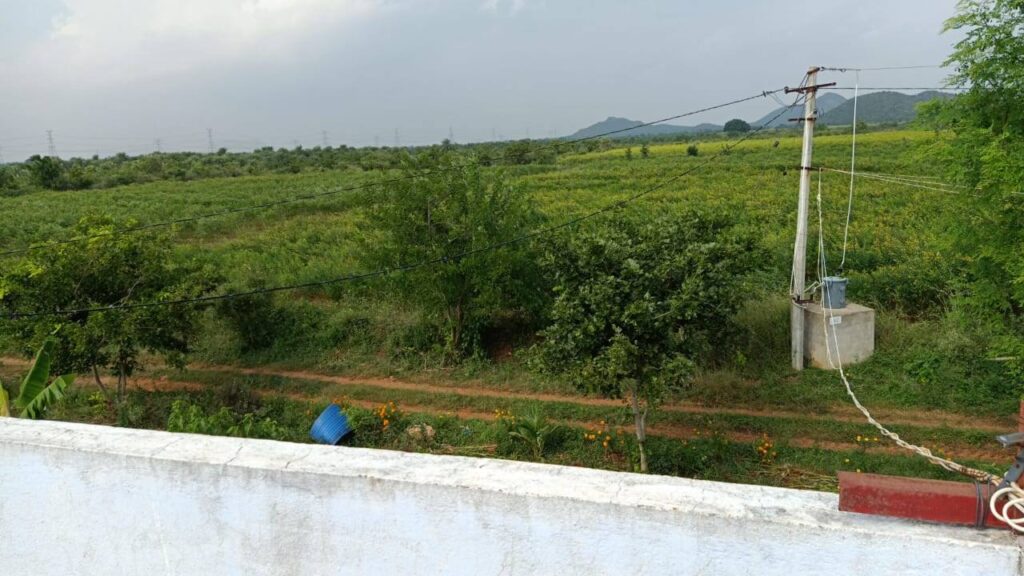Mastering Codling Moth Control: Expert Strategies for Sustainable Apple Orchard Management
“Codling moths can cause up to 80% crop loss in untreated apple orchards, highlighting their destructive potential.”
Welcome to our comprehensive guide on mastering codling moth control for sustainable apple orchard management. As experts in agricultural technology and pest management, we at Farmonaut understand the critical importance of protecting your valuable fruit crops from this persistent and destructive pest. In this blog post, we’ll dive deep into effective strategies for apple orchard pest management, focusing on the notorious codling moth (Cydia pomonella).
Apple orchards are the lifeblood of many farming communities, and the codling moth poses a significant threat to their productivity. Whether you’re a conventional or organic grower, our aim is to equip you with the knowledge and tools necessary to implement a robust integrated pest management (IPM) program tailored to your specific needs.
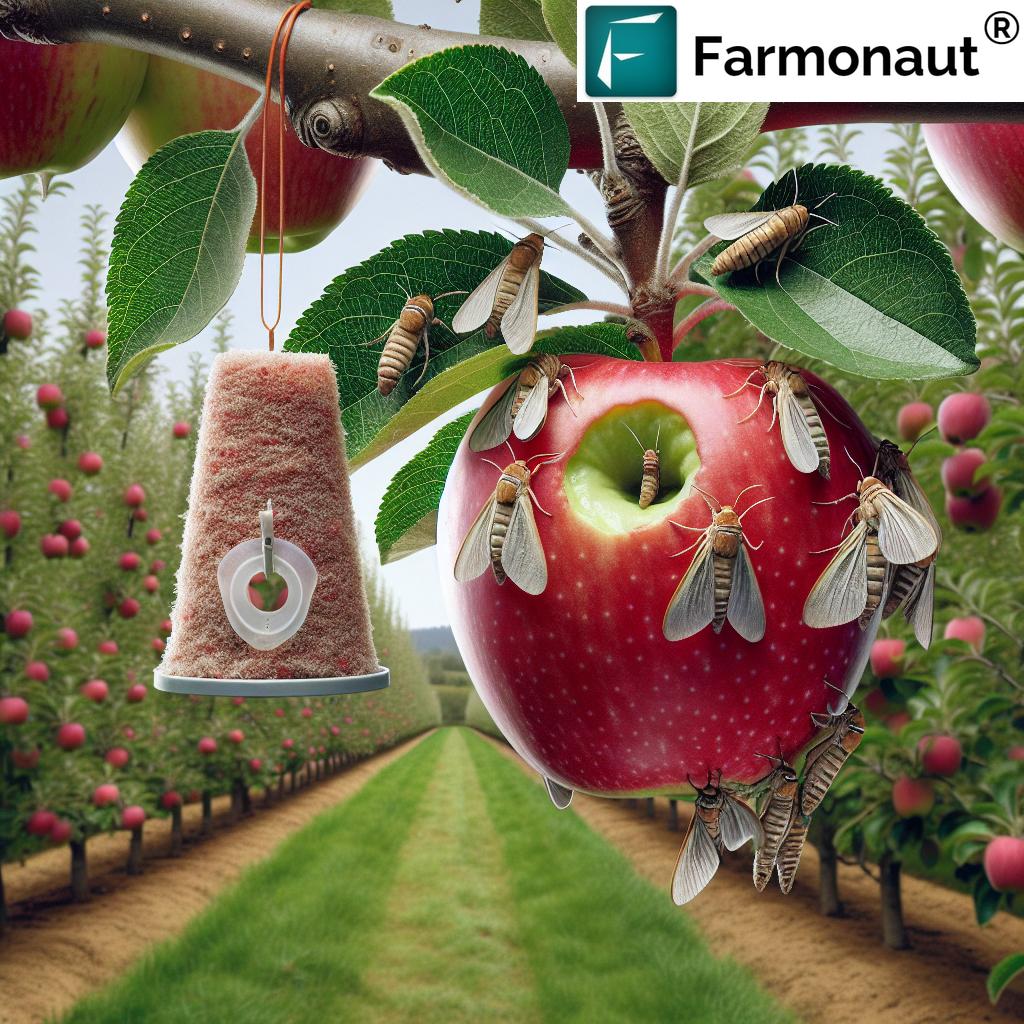
Understanding the Codling Moth: Life Cycle and Impact
Before we delve into control strategies, it’s crucial to understand the life cycle of the codling moth and its impact on apple production. The codling moth, scientifically known as Cydia pomonella, is one of the most common and destructive pests in apple orchards worldwide.
- Egg Stage: Female moths lay tiny, disc-shaped eggs on leaves, stems, or developing fruits. The egg stage typically lasts 1-2 weeks.
- Larval Stage: Upon hatching, larvae immediately seek out and bore into fruits, causing significant damage. This stage lasts 3-5 weeks.
- Pupal Stage: Mature larvae leave the fruit to pupate in protected areas such as tree bark or soil. This stage lasts 1-3 weeks.
- Adult Stage: Adult moths emerge and begin mating and laying eggs, continuing the cycle.
The impact of codling moths on apple production can be severe. Infested fruits are rendered unmarketable, leading to substantial economic losses for growers. In untreated orchards, crop losses can reach up to 80%, underscoring the importance of effective control measures.
Integrated Pest Management: A Holistic Approach
At Farmonaut, we advocate for an integrated pest management (IPM) approach to codling moth control. IPM combines various control methods to manage pest populations effectively while minimizing environmental impact and preserving beneficial insects.
“Pheromone traps can detect as few as 1-2 codling moths per acre, enabling early intervention in orchards.”
Key components of an IPM program for codling moth control include:
- Monitoring and forecasting
- Cultural control methods
- Biological control
- Chemical control (when necessary)
- Mating disruption techniques
Monitoring and Forecasting: The Foundation of Effective Control
Accurate monitoring and forecasting are crucial for timing control measures effectively. Here’s how you can implement a robust monitoring system:
- Pheromone Traps: Deploy pheromone traps throughout your orchard to monitor adult moth populations. These traps use synthetic female pheromones to attract male moths.
- Degree Day Models: Utilize degree day accumulations to predict pest development stages and optimize treatment timing.
- Regular Orchard Inspections: Conduct weekly visual inspections of fruits and trees to detect early signs of infestation.
Farmonaut’s satellite-based crop health monitoring system can provide valuable insights into orchard conditions, complementing on-ground observations. Our platform uses multispectral satellite imagery to track vegetation health, helping you identify potential problem areas before they escalate.
Cultural Control Methods: Prevention is Key
Implementing cultural control methods can significantly reduce codling moth populations and minimize the need for chemical interventions. Consider the following practices:
- Orchard Sanitation: Remove and destroy fallen fruit regularly to eliminate potential breeding sites.
- Pruning: Proper pruning improves air circulation and sunlight penetration, creating less favorable conditions for pest development.
- Tree Banding: Apply corrugated cardboard bands around tree trunks to trap larvae seeking pupation sites.
- Fruit Thinning: Thin fruit clusters to reduce favorable egg-laying sites and improve spray coverage.
Biological Control: Harnessing Nature’s Allies
Biological control methods leverage natural predators and parasites to manage codling moth populations. These eco-friendly approaches include:
- Parasitic Wasps: Release Trichogramma wasps, which parasitize codling moth eggs.
- Nematodes: Apply entomopathogenic nematodes to target overwintering larvae in the soil.
- Predatory Insects: Encourage populations of natural predators like birds, bats, and ground beetles.
By promoting biodiversity in your orchard, you create a more balanced ecosystem that naturally suppresses pest populations.
Chemical Control: When and How to Use Insecticides
While we prioritize non-chemical control methods, there are situations where insecticide applications may be necessary. When using chemical controls, consider the following:
- Timing: Apply insecticides based on monitoring data and degree day models to target vulnerable life stages.
- Product Selection: Choose insecticides that are effective against codling moths while minimizing impact on beneficial insects.
- Rotation: Rotate between different insecticide classes to prevent resistance development.
- Application Technique: Ensure thorough coverage of the tree canopy for maximum effectiveness.
Always follow label instructions and adhere to local regulations when using chemical controls. Farmonaut’s AI-powered advisory system, Jeevn AI, can provide personalized recommendations for pest management, including optimal timing for insecticide applications based on real-time orchard conditions.
Mating Disruption: A Sustainable Long-Term Strategy
Mating disruption is an innovative and environmentally friendly approach to codling moth control. This method involves:
- Saturating the orchard with synthetic pheromones to confuse male moths
- Preventing males from locating females, thus reducing mating and egg-laying
- Using pheromone dispensers or specialized spray formulations
Mating disruption is particularly effective in large, isolated orchards and can significantly reduce the need for insecticide applications over time.
Organic Control Options for Codling Moths
For organic apple growers, there are several effective control options that align with organic certification requirements:
- Horticultural Oils: Apply narrow-range oils to smother eggs and young larvae.
- Kaolin Clay: Use kaolin clay sprays to create a protective barrier on fruits and foliage.
- Microbial Insecticides: Utilize Bacillus thuringiensis (Bt) products for targeted larval control.
- Spinosad: Apply spinosad-based products, which are derived from naturally occurring soil bacteria.
These organic treatments can be highly effective when used in combination with cultural and biological control methods as part of an integrated approach.

Leveraging Technology for Enhanced Pest Management
At Farmonaut, we believe in harnessing the power of technology to revolutionize orchard management. Our suite of tools can significantly enhance your codling moth control efforts:
- Satellite-Based Crop Monitoring: Our platform provides real-time insights into orchard health, helping you identify potential problem areas before they escalate.
- AI-Powered Advisory System: Jeevn AI analyzes various data inputs to provide personalized pest management recommendations tailored to your specific orchard conditions.
- Weather Forecasting: Access accurate, localized weather forecasts to optimize the timing of control measures.
- Data Analytics: Track and analyze pest population trends over time to refine your management strategies.
By integrating these technological solutions into your IPM program, you can make more informed decisions and achieve better control outcomes.
Sustainable Orchard Management Practices
Effective codling moth control is just one aspect of sustainable orchard management. To ensure long-term success and environmental stewardship, consider implementing these broader practices:
- Soil Health Management: Maintain healthy soil through organic matter additions and cover cropping.
- Water Conservation: Implement efficient irrigation systems and practices to optimize water use.
- Biodiversity Promotion: Create habitat for beneficial insects and pollinators within and around the orchard.
- Nutrient Management: Use soil testing and precision application techniques to optimize fertilizer use.
These practices not only contribute to pest management but also enhance overall orchard health and productivity.
Legal Considerations and Product Label Instructions
When implementing any pest control strategy, it’s crucial to adhere to legal requirements and product label instructions. Keep in mind:
- Always follow the label instructions for any pesticide or biological control product.
- Adhere to pre-harvest intervals and re-entry periods specified on product labels.
- Stay informed about local regulations regarding pesticide use and application methods.
- Maintain accurate records of all pest monitoring activities and control measures applied.
Compliance with these requirements not only ensures legal operation but also promotes safe and effective pest management practices.
Comparative Analysis of Codling Moth Control Methods
To help you make informed decisions about which control methods to implement in your orchard, we’ve compiled a comprehensive comparison table:
| Control Method | Effectiveness Rating (1-5) | Sustainability Score (1-5) | Cost Estimate | Implementation Difficulty | Best Time to Apply | Target Life Stage |
|---|---|---|---|---|---|---|
| Pheromone Traps for Monitoring | 4 | 5 | Low | Easy | Early Spring | Adult |
| Mating Disruption Techniques | 4 | 5 | Medium | Moderate | Early Season | Adult |
| Chemical Insecticides (e.g., Organophosphates) | 5 | 2 | Medium | Moderate | Based on Monitoring | Egg, Larva |
| Horticultural Oils | 3 | 4 | Low | Easy | Early Season | Egg, Young Larva |
| Biological Control (Parasitic Wasps) | 3 | 5 | Medium | Moderate | Throughout Season | Egg |
| Sanitation Methods | 3 | 5 | Low | Easy | Year-round | All Stages |
| Integrated Pest Management (IPM) Approach | 5 | 5 | Medium | Difficult | Year-round | All Stages |
This table provides a quick reference for comparing different control methods based on their effectiveness, sustainability, cost, and ease of implementation. The Integrated Pest Management (IPM) approach, which combines multiple methods, offers the best overall balance of effectiveness and sustainability.
Farmonaut’s Role in Advanced Pest Management
At Farmonaut, we’re committed to empowering farmers with cutting-edge technology for more effective and sustainable pest management. Our platform offers several features that can enhance your codling moth control efforts:
- Real-time Crop Health Monitoring: Our satellite-based monitoring system provides up-to-date information on vegetation health, helping you identify potential pest hotspots early.
- AI-powered Advisory: Our Jeevn AI system analyzes various data inputs to provide personalized recommendations for pest management strategies.
- Weather Forecasting: Access accurate, localized weather forecasts to optimize the timing of control measures.
- Data Analytics: Track and analyze pest population trends over time to refine your management strategies.
By leveraging these tools, you can make more informed decisions and achieve better control outcomes in your apple orchard.
Explore Farmonaut’s API for advanced agricultural data integration
Conclusion: A Holistic Approach to Codling Moth Control
Mastering codling moth control is essential for sustainable apple orchard management. By implementing a comprehensive IPM program that combines monitoring, cultural practices, biological control, and targeted chemical applications when necessary, you can effectively manage this persistent pest while minimizing environmental impact.
Remember that successful pest management is an ongoing process that requires vigilance, adaptability, and a commitment to continuous improvement. By staying informed about the latest research and technologies, and by leveraging advanced tools like those offered by Farmonaut, you can stay one step ahead of codling moths and other orchard pests.
We encourage you to explore the various control methods discussed in this guide and tailor them to your specific orchard conditions. With dedication and the right strategies, you can protect your apple crops, improve yields, and contribute to more sustainable agricultural practices.
Access Farmonaut’s API Developer Docs for integration guidance
FAQs: Codling Moth Control in Apple Orchards
- Q: How often should I monitor for codling moths in my orchard?
A: We recommend weekly monitoring during the growing season, with more frequent checks during peak moth activity periods. - Q: Are organic control methods as effective as conventional pesticides?
A: Organic methods can be highly effective when used as part of an integrated approach, though they may require more frequent application and careful timing. - Q: How can I determine the best time to apply control measures?
A: Use pheromone traps and degree day models to track moth populations and development stages. Farmonaut’s AI advisory system can also provide timely recommendations based on your specific orchard conditions. - Q: Is mating disruption effective in small orchards?
A: Mating disruption is generally more effective in larger orchards (5 acres or more) due to edge effects. For smaller orchards, combining mating disruption with other control methods can improve results. - Q: How can I encourage natural predators of codling moths in my orchard?
A: Promote biodiversity by maintaining diverse vegetation around the orchard, installing bird houses, and minimizing broad-spectrum pesticide use.
Farmonaut Subscriptions: Empower Your Orchard Management
Take your apple orchard management to the next level with Farmonaut’s advanced agricultural technology solutions. Our subscription packages offer a range of features designed to optimize your pest management strategies and overall orchard productivity.
By subscribing to Farmonaut, you’ll gain access to cutting-edge satellite-based crop monitoring, AI-powered advisory services, and comprehensive data analytics tools. These features can significantly enhance your ability to detect and manage codling moth infestations, as well as other orchard management challenges.
Choose the subscription plan that best fits your needs and take the first step towards more efficient, sustainable, and profitable apple orchard management. With Farmonaut by your side, you’ll have the insights and tools necessary to stay ahead of pests and optimize your orchard’s performance.





